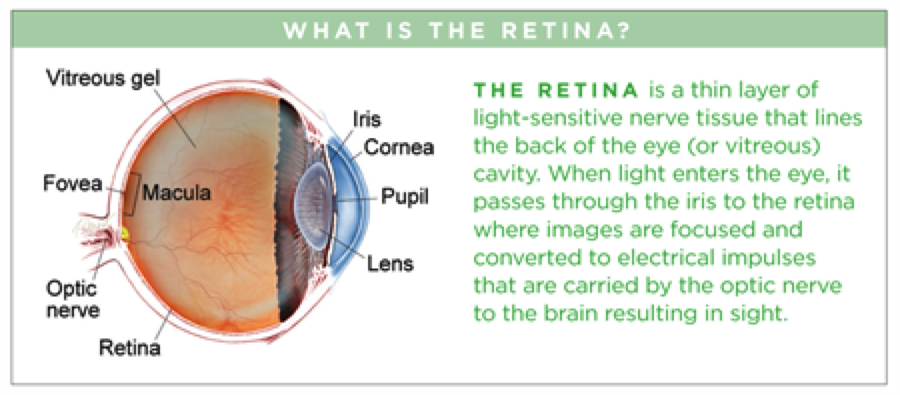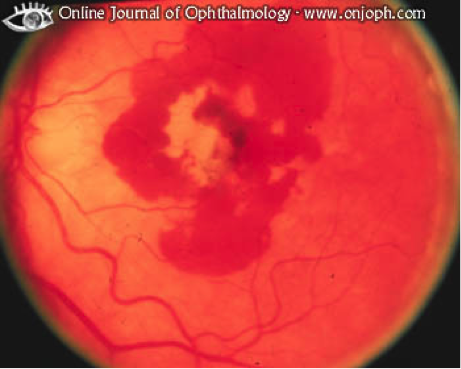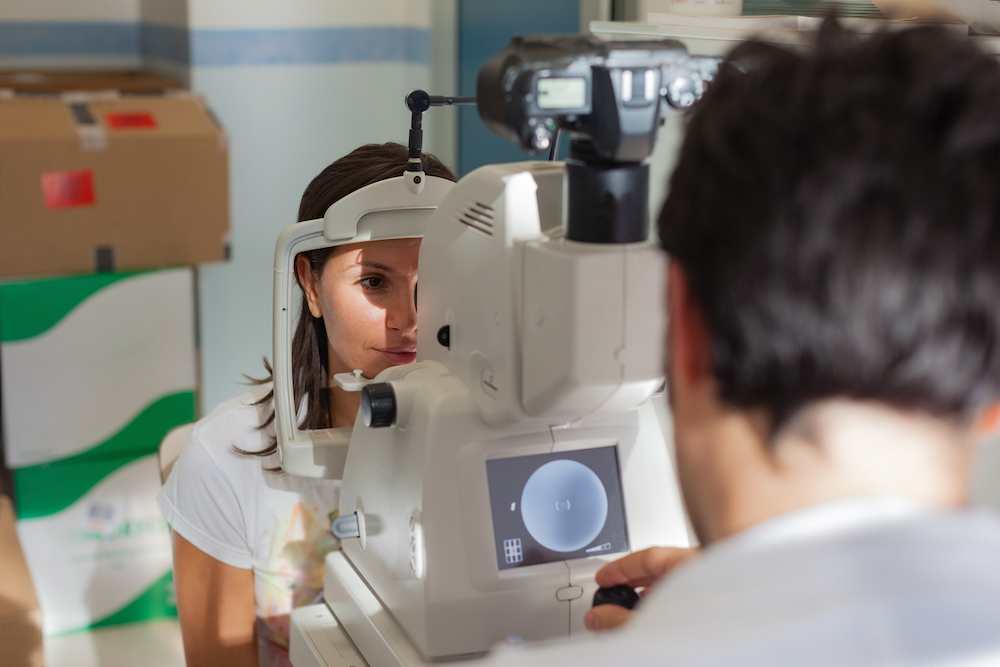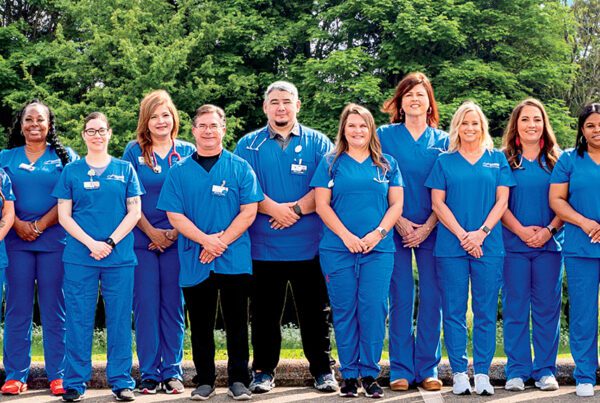It usually occurs in the sixth decade of life. It involves the center part of the retina which is called the macula. The macula is the bulls-eye of vision, that is the area of best visual acuity.

Photo courtesy of ASRS website
Macular degeneration is divided into two types: dry and wet.
Dry macular degeneration is when center vision slowly wears away over many years. It can be thought of “slow and steady”. What happens is an accumulation of cellular waste products called drusen build up causing the underlying cells to die in that area leading to a condition called geographic atrophy.
The other type of macular degeneration is called wet macular degeneration. In wet macular degeneration, the vision goes down very quickly usually over days to weeks. This is commonly referred to as “fast and ugly”. Patients can lose their ability to read or to drive. In wet macular degeneration new blood vessels form leading to swelling and bleeding of central vision.

Photo courtesy of Anat Loewenstein, MD
The incidence of dry macular degeneration, one out 10 people develop dry macular degeneration in their 60s, one out four people their 70s, and one out three people develop macular degeneration in their 80s. In terms of wet macular degeneration there is a 10 percent risk of conversion to wet from dry macular degeneration every year. In addition, if a person has it one eye there is a 10 percent risk of developing wet macular degeneration in the other eye.
There are very few approved treatments for dry macular degeneration that are currently approved. The mainstay of treatment is prevention of progression. Antioxidant vitamins Luetin and Zeoxanthin along with antioxidant vitamins C E and Zinc and Copper have been shown to decrease the progression of macular degeneration. 1,2 In addition a diet rich in green leafy vegetables including Kale has been shown to decrease progression as well. In terms of risk factors family history, history of smoking and cumulative sun exposure are all risk factors for both development and progression of the disease.
 There are treatments for wet macular degeneration. There are three medications approved to treat macular degeneration. The first Lucentis was approved in 2006, the second, Avastin a generic form of Lucentis, never approved but widely used, and the third is Eylea approved in 2016. All these drugs work by similar mechanisms they are act to close down these abnormal blood vessels before they start bleeding and cause the swelling in the retina to decrease . They are all given by intraocular injection as frequently as monthly, yes shots in the eye- but they don’t hurt due to the anesthesia given prior to injection.
There are treatments for wet macular degeneration. There are three medications approved to treat macular degeneration. The first Lucentis was approved in 2006, the second, Avastin a generic form of Lucentis, never approved but widely used, and the third is Eylea approved in 2016. All these drugs work by similar mechanisms they are act to close down these abnormal blood vessels before they start bleeding and cause the swelling in the retina to decrease . They are all given by intraocular injection as frequently as monthly, yes shots in the eye- but they don’t hurt due to the anesthesia given prior to injection.
There are new medications that we are currently testing in clinical trials. Some of these medicines work with the existing medications for wet macular degeneration to increase the efficacy of the current medications and some work to increase the duration between injections. In addition, we are testing an implant that in put in the eye was that acts as a pump to not only decrease the need for injections but also to a give a sustained dose of medication over time,similar to an insulin pump. For dry macular degeneration our practice is testing a number of medications either given by mouth or by injections to decrease progression over time. In addition we are starting to look at special vitamins that may help prevent it dry macular degeneration from developing at all.
Although macular degeneration is a devastating disease, new medications are this being developed to hopefully decrease the impact of the effect of disease. Our practice is at the forefront of these clinical trials.
For more information visit MCOA or call 210.697.2020.







Recent Comments